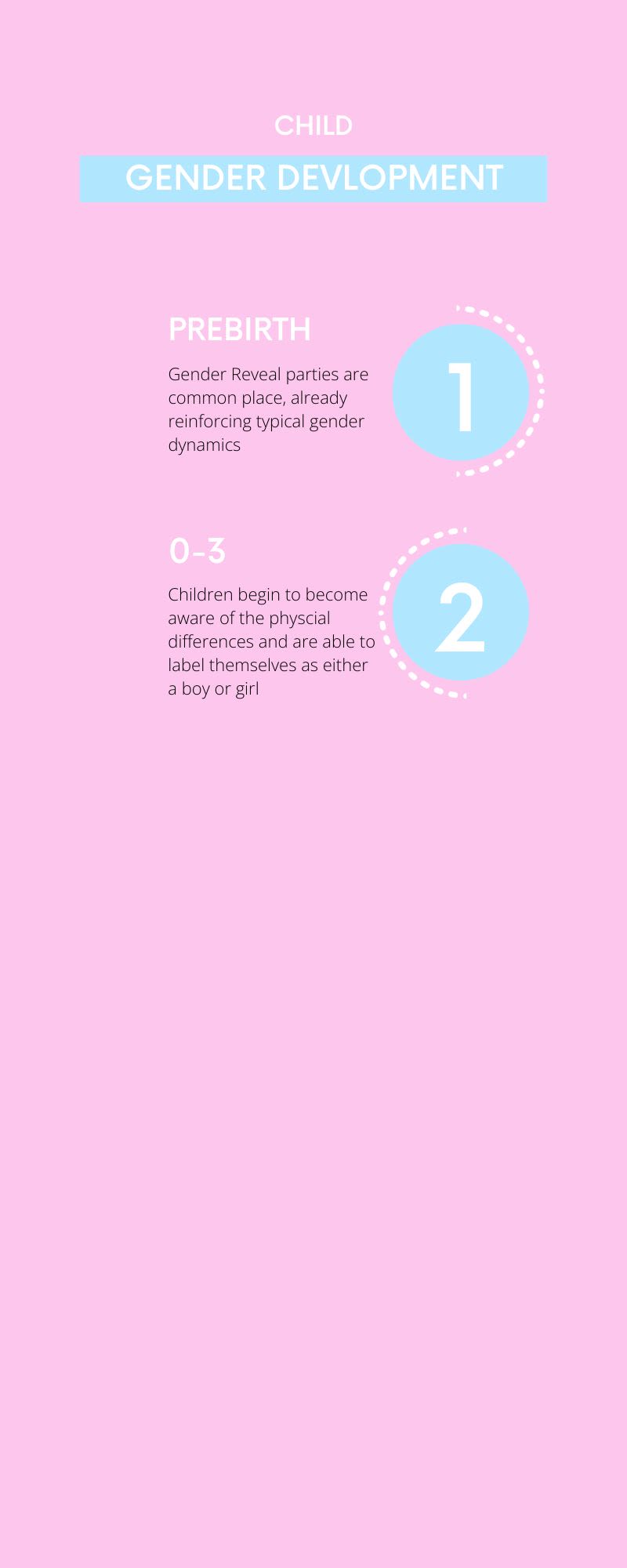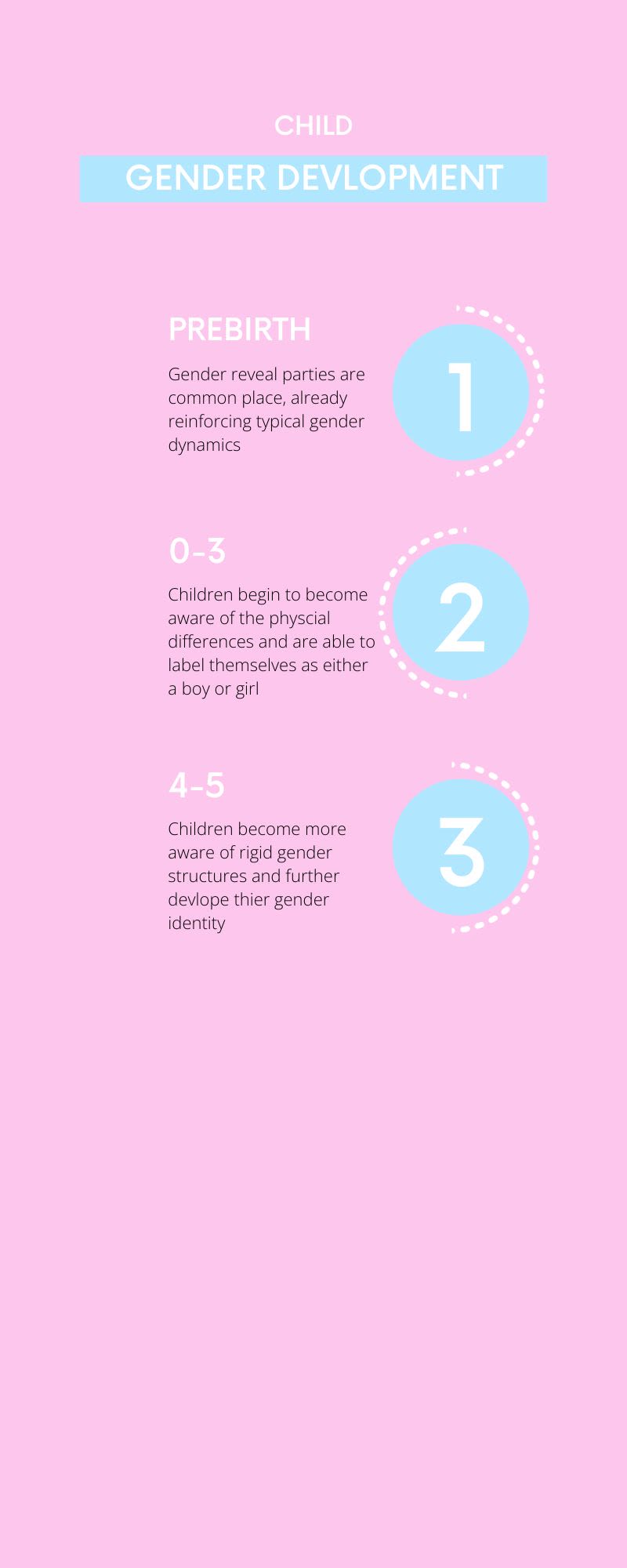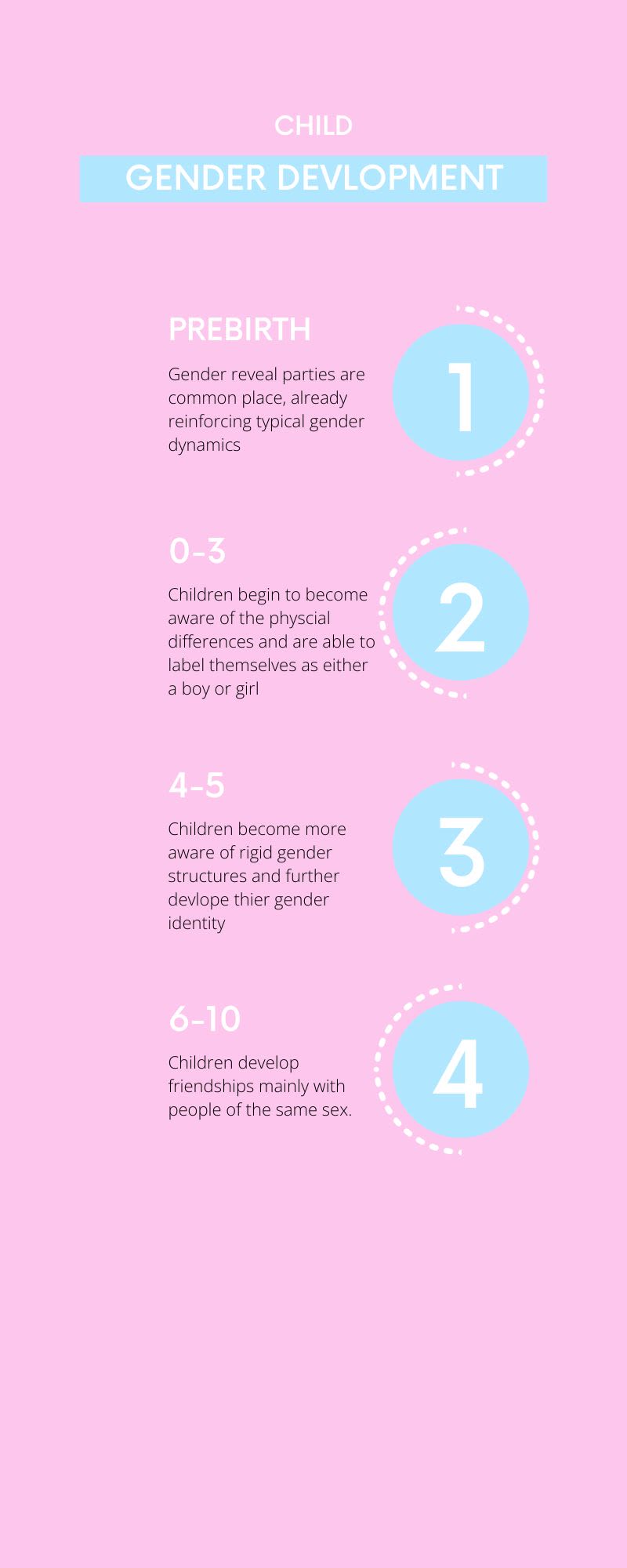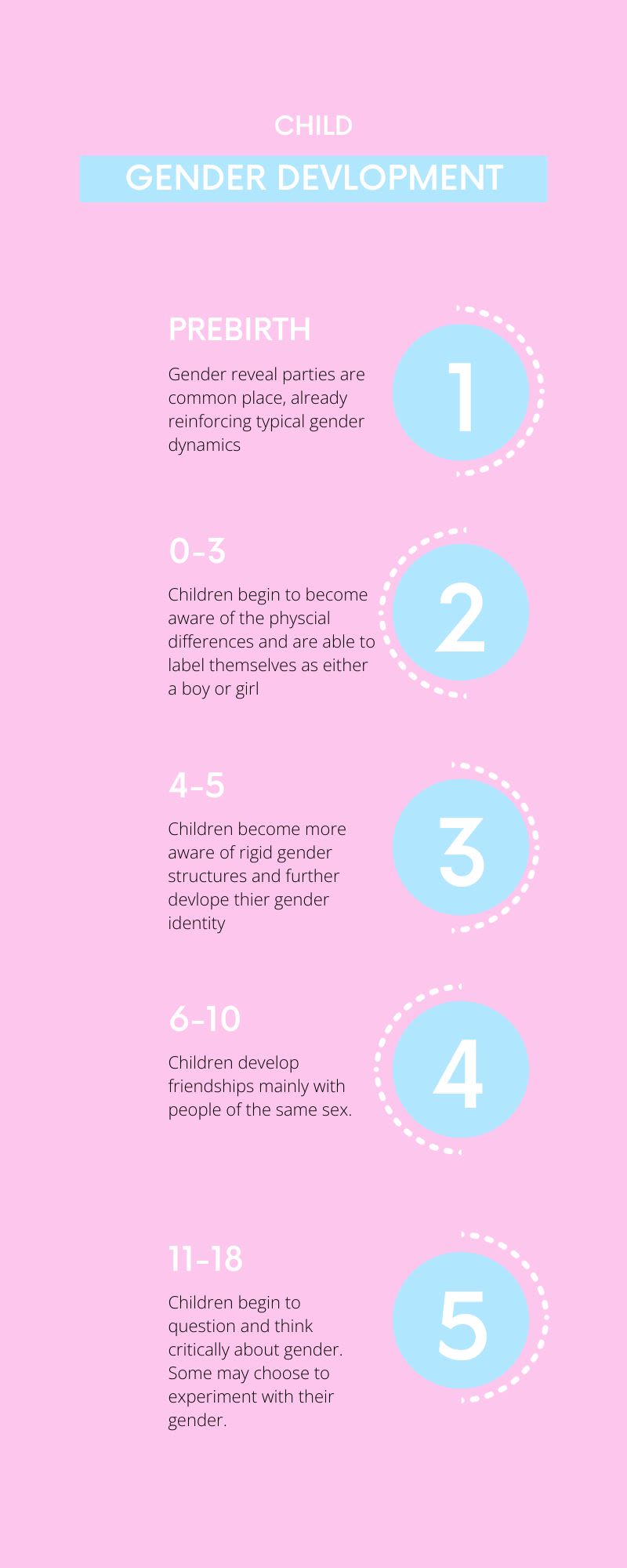Innocence to Identity: Tracing the Path of Gender Development
How gender is developed through ages 0-18
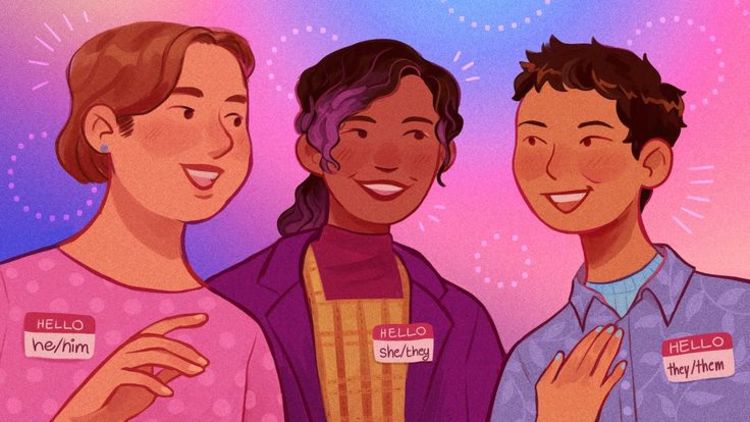
Always' #LikeAGirl Super bowl XLIX commercial.
Gender is a social construction which is present all throughout a person's life. It helps to inform their behaviour, decisions and personality. Gender is informed by behaviour and expectations of what a certain gender 'is', this creates''gender norms'. These are the standard to what 'male' and 'female' are held to. These norms and stereotypes penetrate all aspects of life, however, by examining childhood you can begin to understand how these develop.
The Always campaign #LikeAGirl demonstrates this by getting asking young adults and children to 'run like a girl'. The older people tended to embrace the stereotype that girls are 'bad at sport', where as the young girls tended to put their heart into their performance.
Judith Butler (they/them) (Verso, 2015)
Judith Butler (they/them) via Verso
Judith Butler's theory of gender performity can help explain how these gender norms are created and perpetuated through society. They argue that no one is born a gender, instead gender is created through repetitive acts, both from the individual and society. As such, these gender norms influence how people portray themselves and how others perceive them. With those who don't conform to these ideas often being ostracized or punished.
Judith Butler: Your Behaviour Creates Your Gender | Big Think (Big Think, 2011)
Gender is the repeated stylization of the body, a set of repeated acts within a highly rigid regulatory frame that congeal over time to produce the appearance of substance, of a natural sort of being. A political genealogy of gender ontologies, if it is successful, will deconstruct the substantive appearance of gender into its constitutive acts and locate and account for those acts within the compulsory frames set by the various forces that police the social appearance of gender.
This is relevant to looking at how children develop their gender thought childhood. Especially how societal stereotypes gradually work to try restrain children's gender. This is both subconscious and conscious within society. For example, parents may be conscious of how the clothes they buy for their children may be gendered. However, their children may be unaware of the gender their clothing choice portrays to the world.
Prenatal Period
Before birth, a person’s gender is determined by their chromosomes, this is the only event which is independent of societal norms. However, before even taking their first breath, individuals can be profoundly shaped by society’s gender expectations. Gender stereotypes can emerge, perpetuating the idea that a child’s gender is fixed and tied solely to their biological sex. Gender reveal parties are a new ritualisation and source which contribute to the idea of a child’s gender being fixed to their biological sex. Gender reveal parties include, smoke, cake cutting or confetti where the cliched colours, pink referring to girl and blue referring to boy will spring out in a celebratory fashion. The colours and symbols inadvertently promote the binary concept of gender.




While parents may plan and bond around knowing the sex of their unborn child, it's crucial to question whether labelling their gender is truly necessary for these purposes.
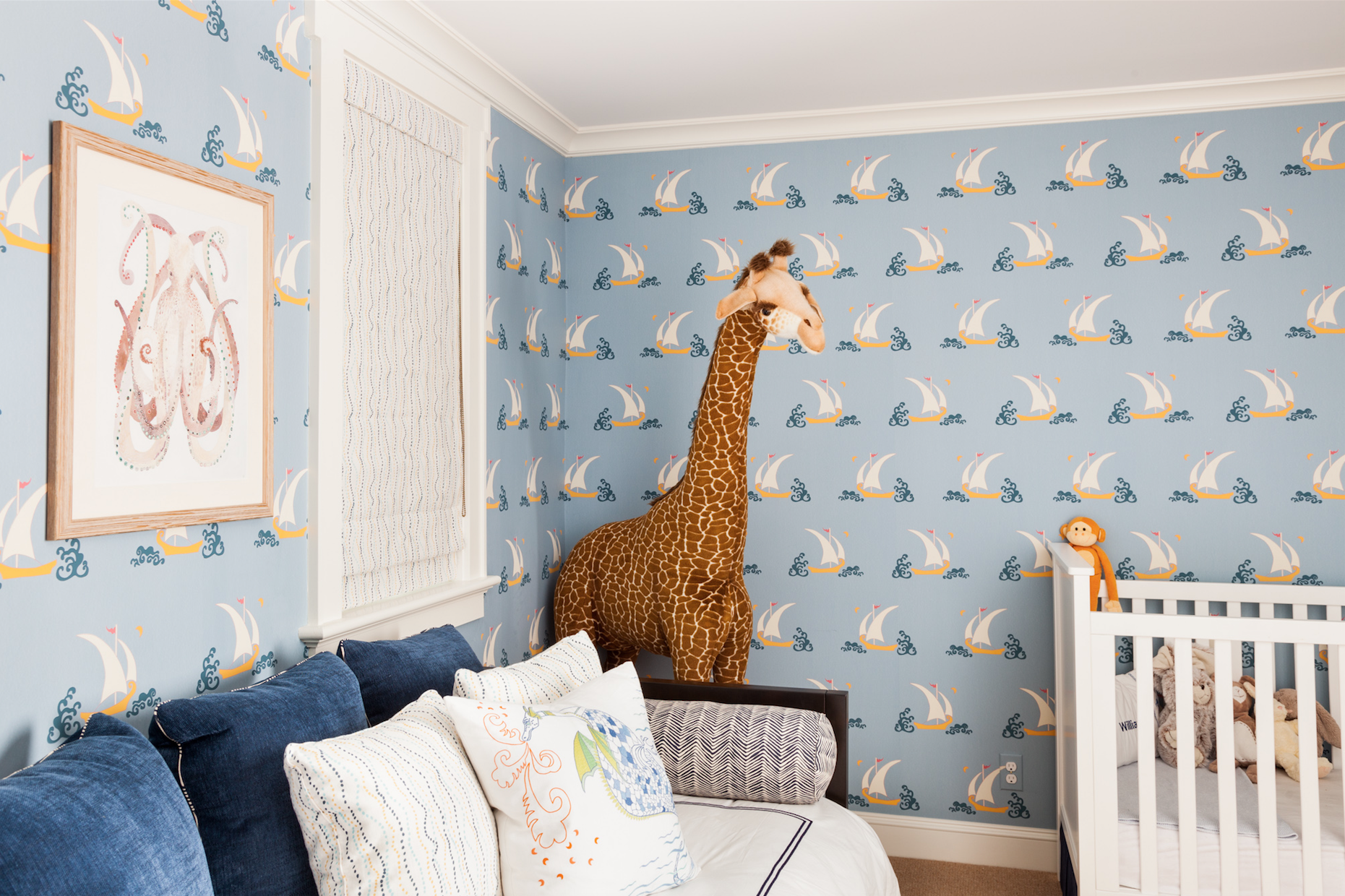

Planning often extends to buying gender-specific clothing and decorating the nursery in accordance with societal expectations, showcasing how gender has already been influenced before birth. While upbringing varies by parents and caregivers, these practices have become deeply ingrained in modern Western societies, further emphasising the impact of gender norms before a child even enters the world.
Timeline
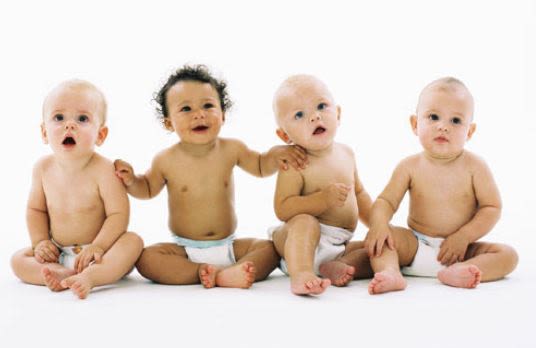
Before 1 year
Children are able to differentiate female from male (voices and faces by 6 months)
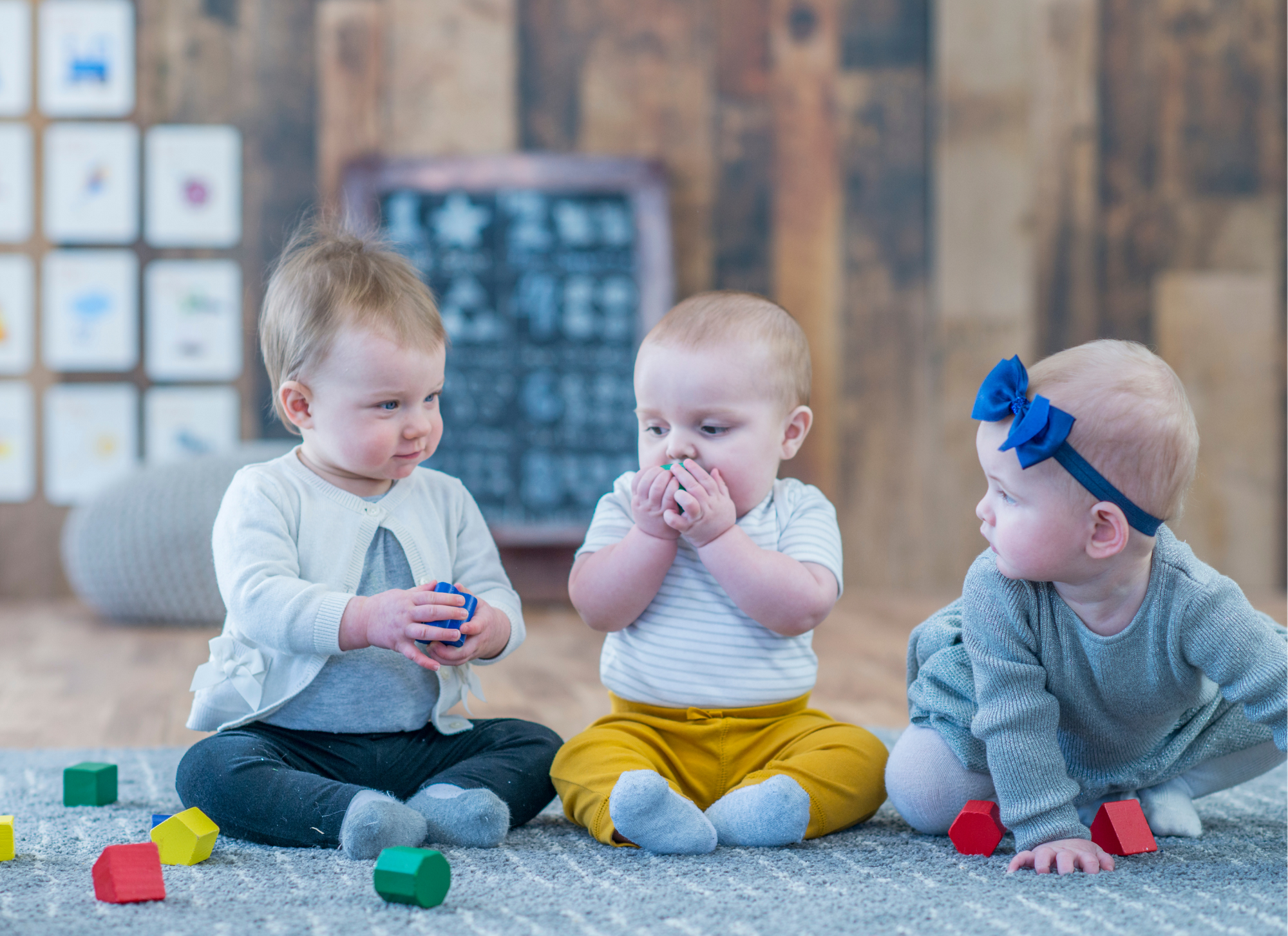
Between 1-2 years
Children start to show same gender preferences (imitation, looking, toy preference)
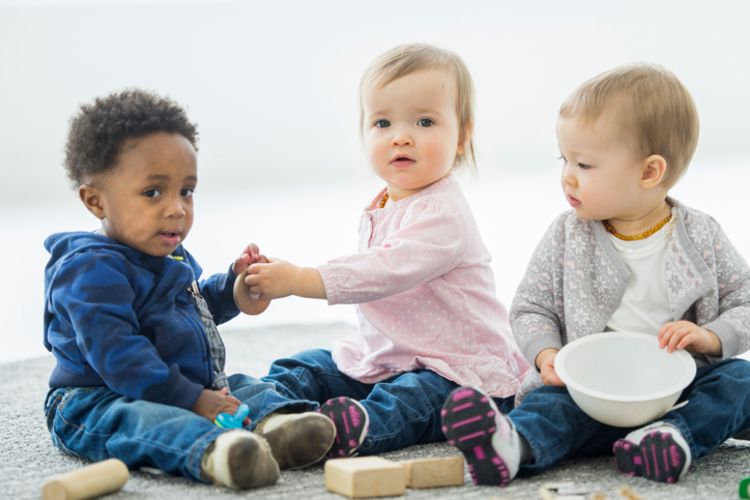
Between 2-3 years
Children label themselves and others by gender
Toddlers
During this critical stage of early childhood, children begin to form their understanding of gender and how it relates to their identity. Society's norms and expectations play a significant role in shaping these perception.
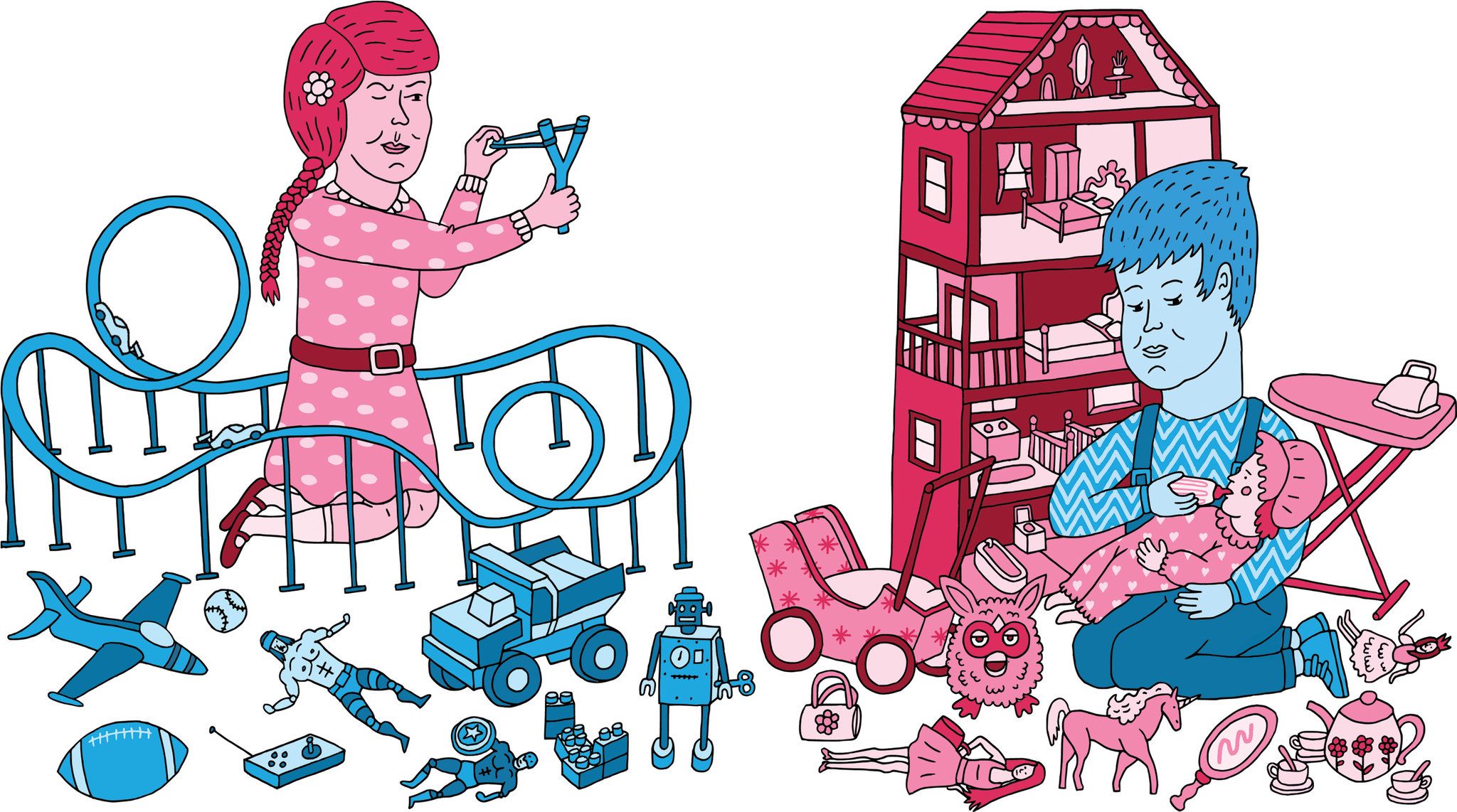
Toys have a huge impact on children's gender development. They are not only toys, but also tools for learning and socialisation. Toys can have a significant impact on gender development since they frequently reinforce and maintain gender preconceptions and conventions, in terms of colours, themes, characters, role models and active vs nurturing.
How Gender Affects Kids Learning and Play:
A BBC investigation conducted in 2017 revealed that parents may unwittingly encourage particular types of toys based on their perception of the child's gender:
Gender-neutral toys should be considered more in future to encourage inclusivity and reduce stereotypes.
Avoiding gender stereotyes can help children be more independent and free to explore the world
4-6 year olds
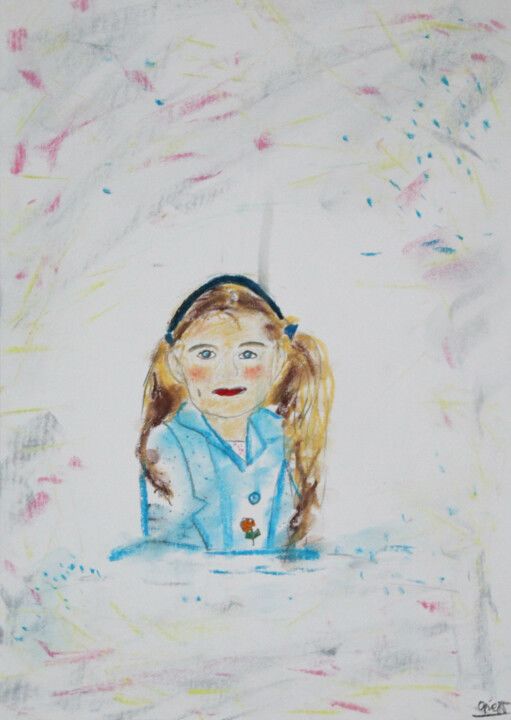
At 4-6 children become more aware of gender stereotypes and feel pressured to comply with them. However, they are unable to engage critically about gender. Therefore are unable to think about the societal constructs behind gender (Reimagining Gender, 2023)
Instead, many of their ideas come from teachers, family members and the media they consume. With ideas such as 'girls can't throw' or only boys can play 'superheroes' become more common. This results in the majority of children spend more time playing with members of their own sex by age 6 (Reimagining Gender, 2023).
This period is called the most 'rigid' period of gender development; as children are aware of how their behaviour impacts expectations of them. A child who does not conform to societal expectation of gender may face social punishment from their peers. The persistence of their defiance of gender stereotypes prove the validity of their identities (University of Washington, 2017). Butler's theory reinforces this as these children are repeatedly exposed to gendered activities and learn to conform to the expectations set to them, or otherwise face social punishment.
This is apparent though the toys which the children play with. This is explored by JeongMee Yoon's Pink and Blue Project. Here she explores how gender identity is formed in part by consumer goods which target both the children and their parents. The associations of pink and blue are internalised within children at an early age. As shown by these photos, the associations between gendered colours and young children is very strong, with large numbers of their belongings being either blue or pink. This reinforces the gender binary as well as serves to help the children reinforce their gender through performativity. As they conform to societies expectations of colours which different genders are allowed to like.
This association between gendered toys also extends to toys belonging to others. Jubilee's 2021 video shows how children are reluctant to play with toys associated with other genders, even when not belonging to them.
We Gave Girls Room Full of "Boy's Toys" (Jubilee, 2021)
Here, boys refused to play with the 'girls' toys even when they were the only options available, which shows just how deeply embedded the gender stereotypes are embedded for children in this age range.
Upworthy's 2016 video also show this. Children were asked to draw what they think of when they hear various stereotypically masculine jobs e.g. surgeon. The children draw 61 images, only 5 were drawn as women, reflecting their rigid idea of gender which has been reinforced by the world around them though other people performing their gender.
When they met the real people, they were shocked they were women, but came to realise that girls can also have these stereotypically masculine jobs. In showing the children these women it can help to redraw their assumptions around gender, and what they can personally achieve.
A Class That Turned Around Kids' Assumptions of Gender Roles (Upworthy, 2016)
Gender development 6-10 year olds
After the ‘rigid’ phase of gender development which mainly presents itself in ages 5 - 6, children begin to understand how gender can be comprehended as a diverse spectrum.
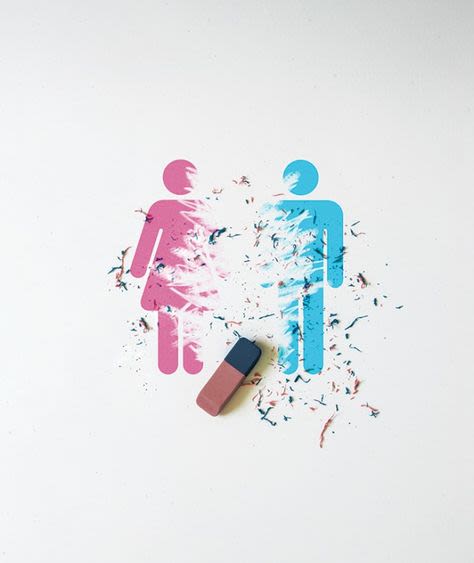
stock image of outline of man and women (like the ones seen on toilet doors), man on right coloured in blue, women on left coloured pink. around half of each side is erased using a rubber (we see the erasings of the rubber all over the page), leaving behind a white background.
stock image of outline of man and women (like the ones seen on toilet doors), man on right coloured in blue, women on left coloured pink. around half of each side is erased using a rubber (we see the erasings of the rubber all over the page), leaving behind a white background.

From the age of 7 most children will have a clear understanding on the basic terminology of gender. This understanding will mostly align with their sex assigned at birth. They are exceptionally aware of their gender and tend to identify with and favour activities, clothing, and toys associated with their gender, as well as becoming familiar with societal gender roles and expectations, (Halim, Ruble, Amodio, 2011). Certain behaviours are recognised and then associated with the genders boy and/or girl. Based on their own preferences, children may begin to comply to or oppose these conventions.
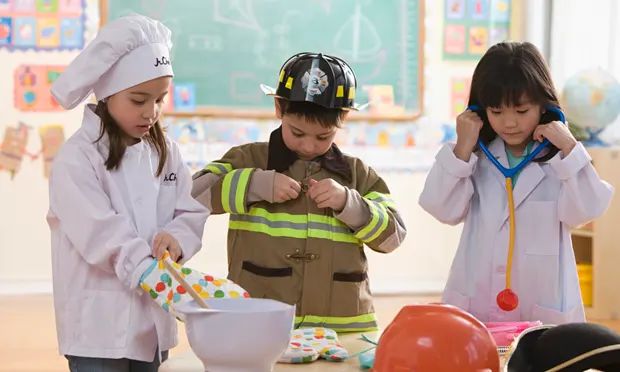
Kids Questions About Gender
This video shows kids being able to ask Courtney Act questions about gender, as they defy traditional gender norms.
From the age of 7, children will have some knowledge on how power indifferences appear within gender. A study showed that most children in this age range only knew of male power figures and didn’t consider females to be in a position of power, (Ruble, D et al, 2007). This can be explained by the stereotypes children use to understand gender, as stereotypes play a key role in how children aged 7 – 10 make sense of the world. Therefore, children learn to associate certain professions, interests and emotions with gender.


Although gender is mostly influenced through stereotypes children are exposed to, media and cultural influences become more prominent during this time of childhood (Martin, Ruble, 2010). At 7 – 10 technology and the media are more commonly used to educate and entertain children. They are exposed to a wide range of gender stereotypes through television, books, and the internet, which can either confirm or question their existing attitudes towards gender.
To the left is an image of Poochy, a non-binary character recently introduced into the popular children's show 'Bluey'. As gender continues to develop in our society, there is an increase in gender representation in the media. Therefore, children are able to be exposed to this and can apply these to their attitudes towards gender.
Gender Development
11-18
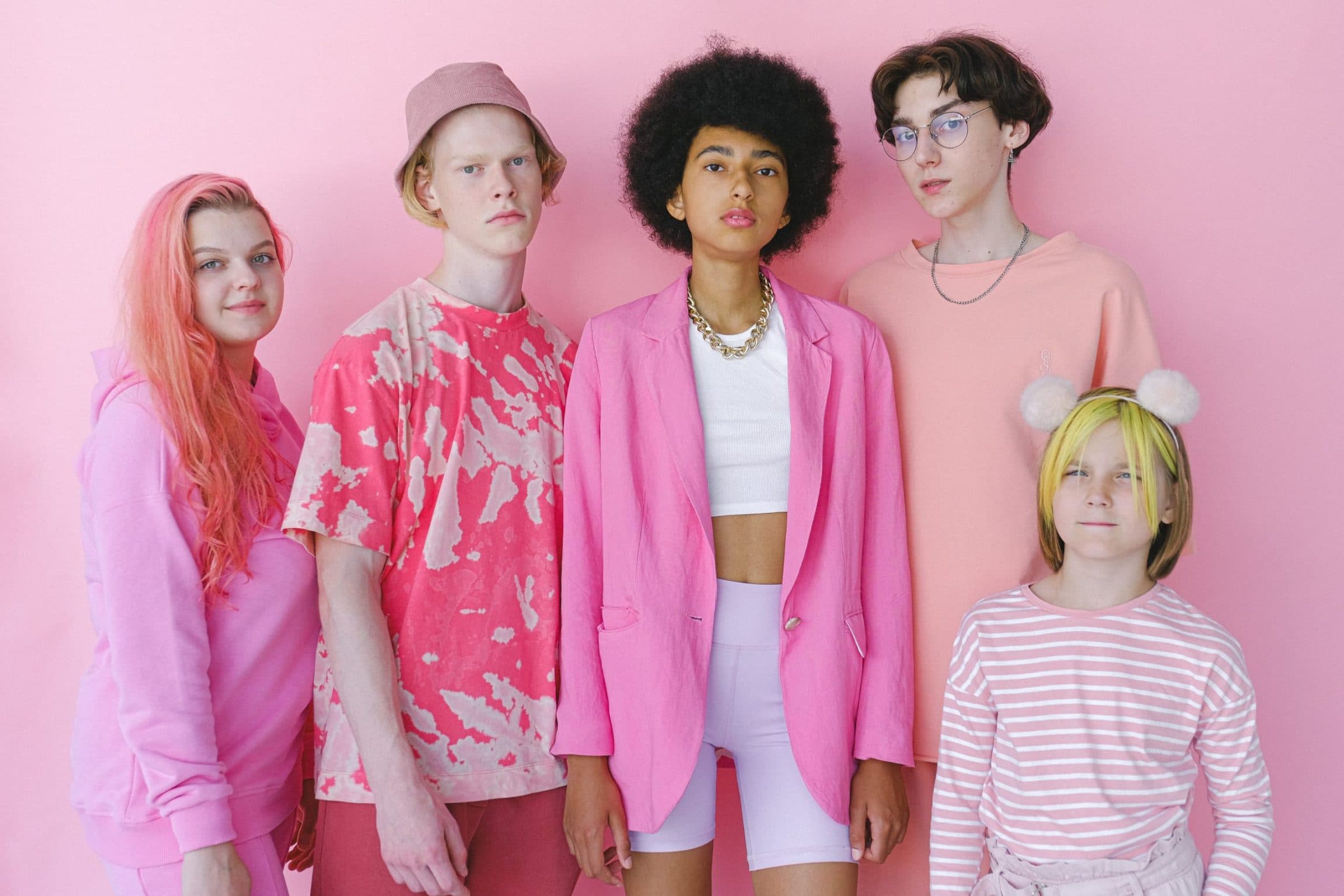
Development of Identity and Gender
Image Above: (2021), Gender Confusion in Teens: For Teens and Parents Who Want Answers
Gender Theory discusses the fact that gender is fluid and is still in development within the age range of 11-18 (Paris et al., 2023). Gender theory is not unique to this age bracket, as one will experience more of the world as one grows older, and some may have the privilege of developing their gender identity in a safe and loving environment, while others are not so lucky.
From the ages 8-12. , Erik Erikson describes this age range as undergoing a stage of Industry and Inferiority (Cherry, 2022).
- Social skills and identity are encouraged and developed at home through the help of parental guidance (Industry), building confidence and a rigid identity, or
- Negatively received and not allowed to demonstrate skills and identity (Cherry, K. 2022). This could lead to repression of gender and identity and feeling inferior to others in relation to their gender and identity.
Image Left: Rosemary, B. (2020), The Gender Identity Terms You Need To Know
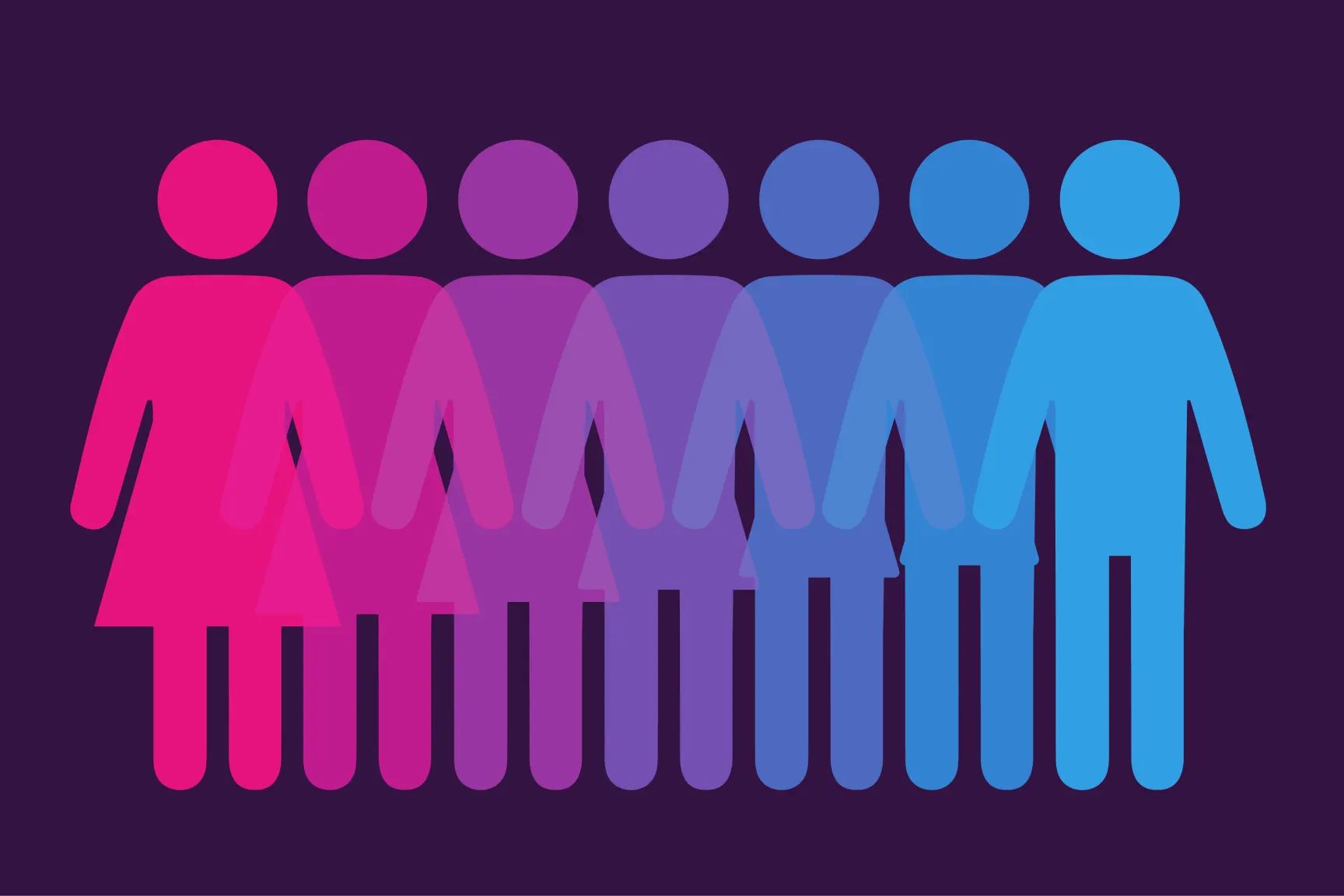
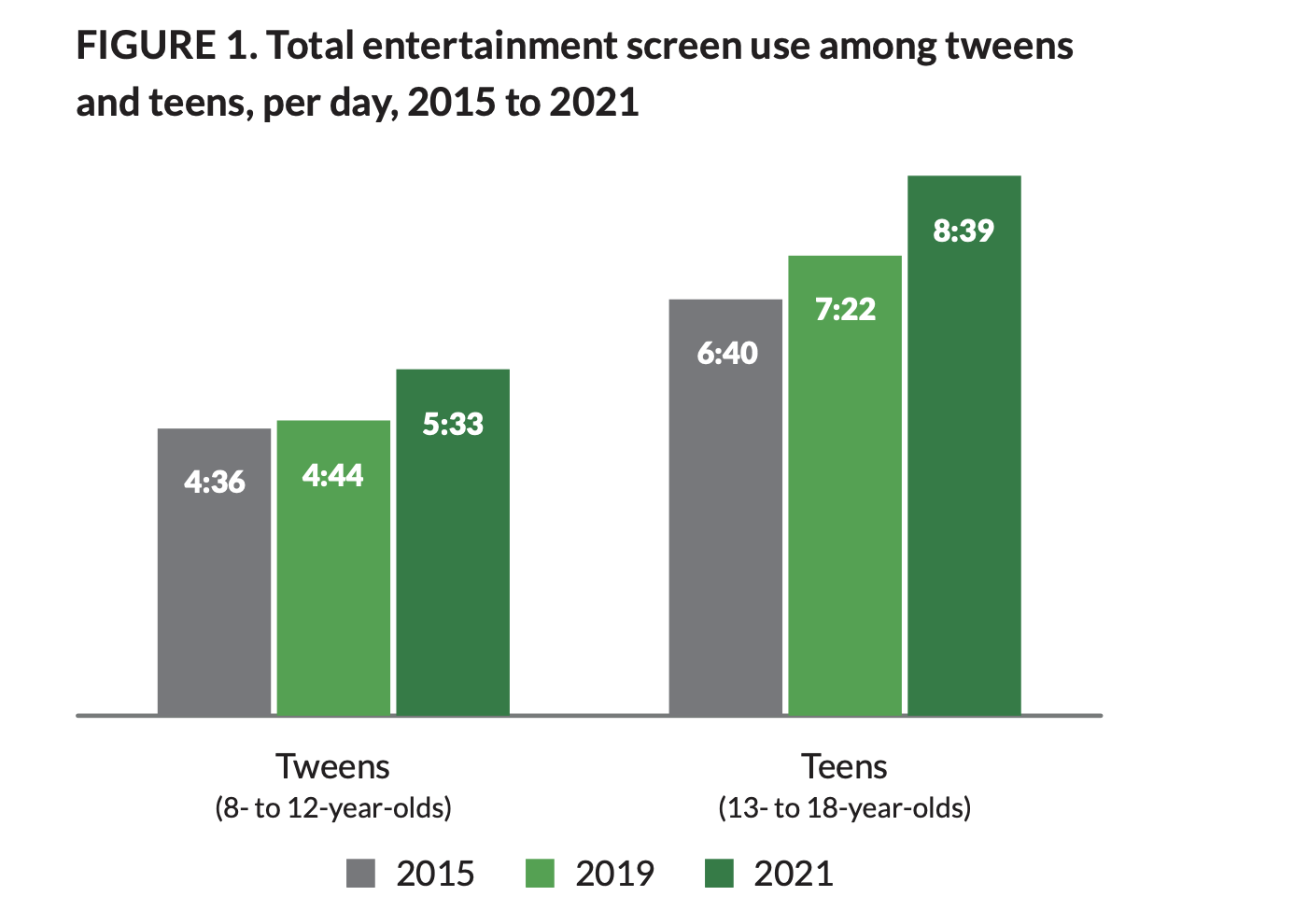
Erik Erikson's theory of psychosocial development explains the stage of adolescence between the ages of 12 to 18 is the stage of Identity vs Role.
This stage emphasises reevaluating oneself through self-reflection and looking through the scope of the world through society and social groups (Cherry, 2022). This includes education, sports, academics, social/peer groups, and leisure time. A variable experiencing rapid growth that has great potential in developing one's gender and identity is Mass Media.
In today's society, learning steadily drifts from home and local knowledge to a more global scale of information via devices and mass media. Children ages 8 have mobile phones, and teen screen use reaches over 8 hours per day as of 2021.
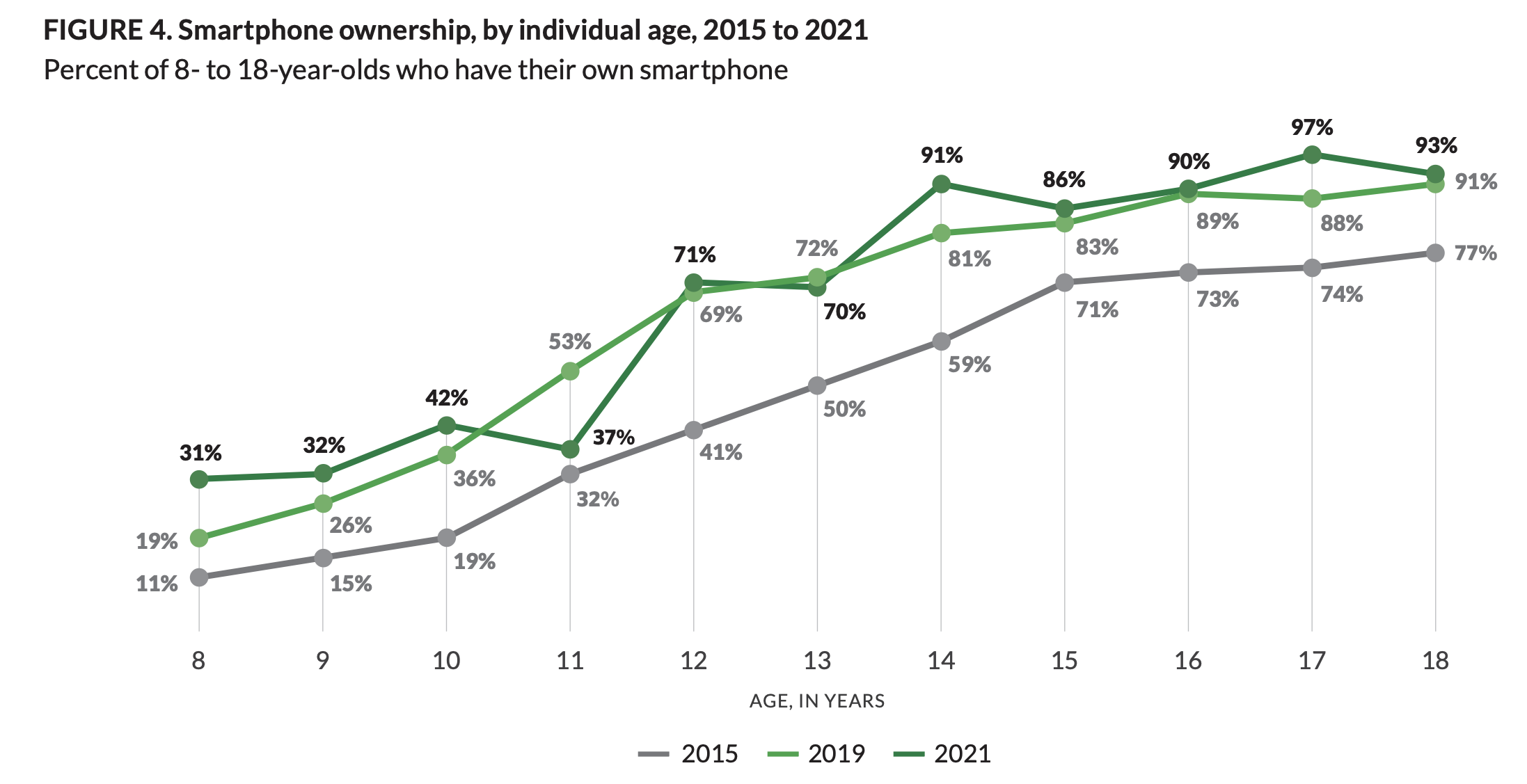
Figure 1 &4: Rideout, V., Peebles, A., Mann, S., & Robb, M. B. (2022)
As children and teens consume media and surf the web, they are taking in information from their screens consciously and subconsciously. This double-edged sword can either help their gender development or repress feelings and expressions due to social norms and enforced ideas of heteronormativity and cisnormativity.
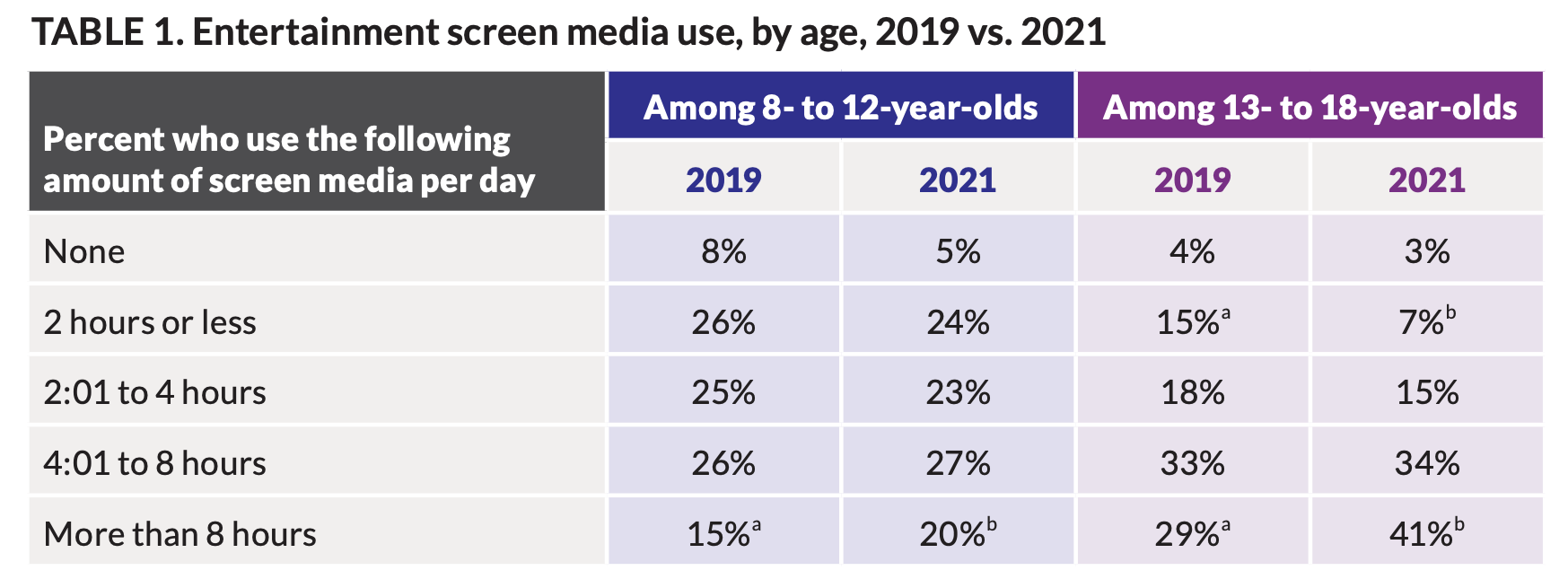
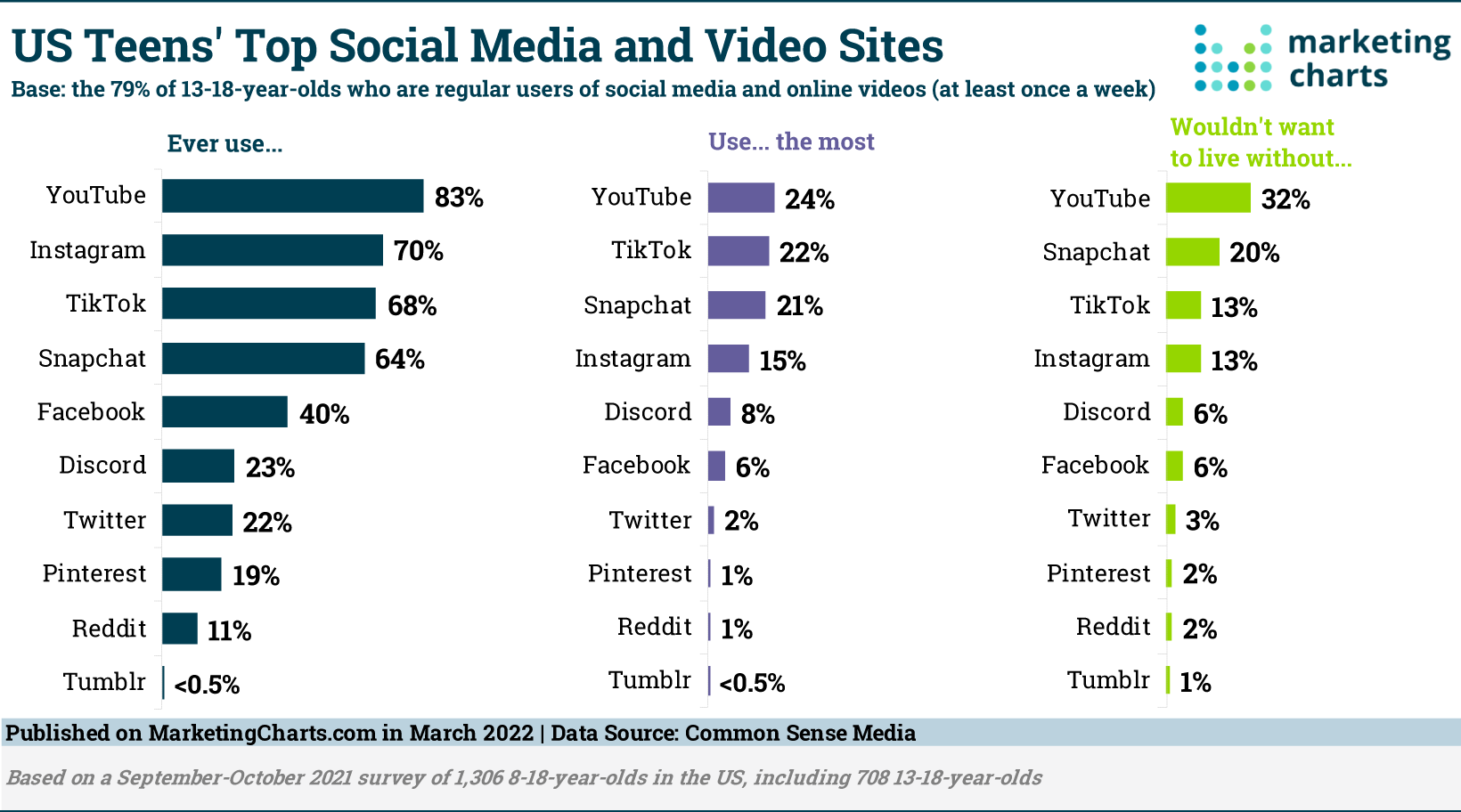
Table 1: Rideout, V., Peebles, A., Mann, S., & Robb, M. B. (2022)
Social media can also be used to speak out about gender and identity issues, such as differentiating gender identity and gender expression
Teens are able to look into different ways of aligning themselves with different gender identities, while also defining gender for themselves, and finding ways to express themselves through fashion.
Image: Fox-Suliaman, J., (2023),14 Androgynous Brands That Are Bound to Blow Up in 2023
Although many may find alignment in their assigned gender, others may not be able to experience and explore other genders until adulthood; some experiences past 18 years of age may also change their outlook on life, and self-reflection will remain a pivotal skill to revisit one's gender and identity.
Image: Prabbhan, P., (2023),The Re-Rise of Androgynous Fashion
Gender Reshaping Through Twitter
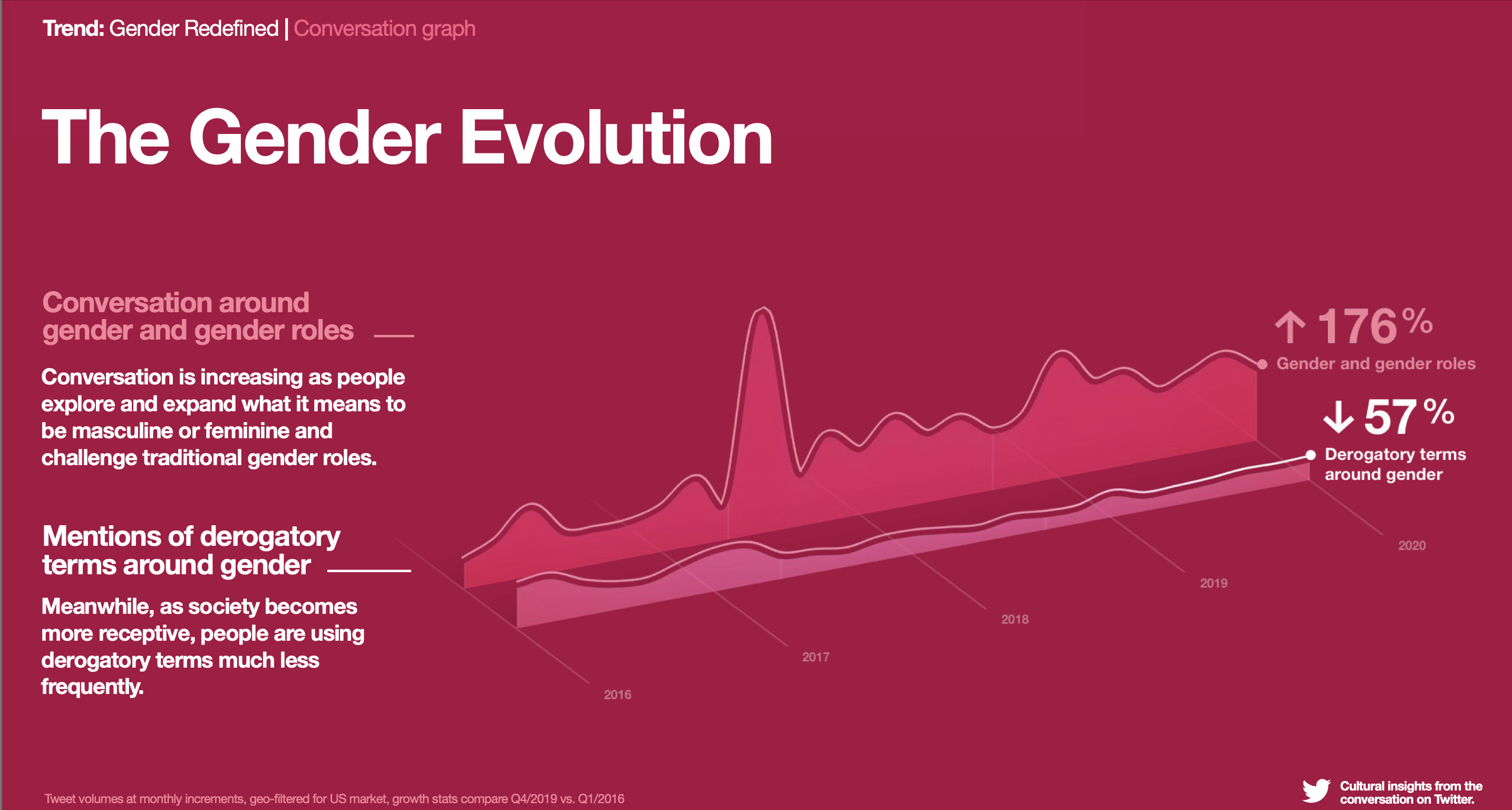
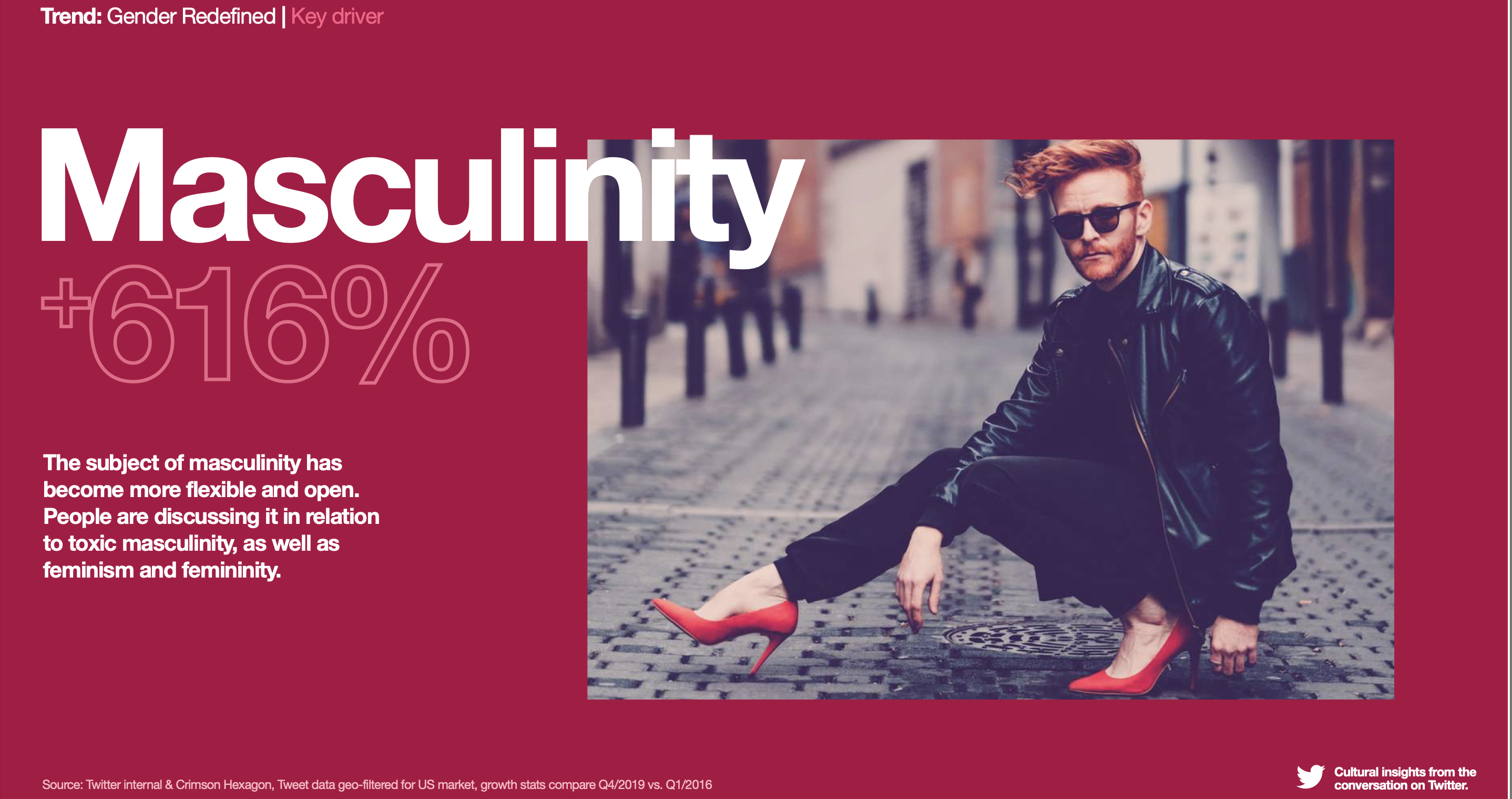
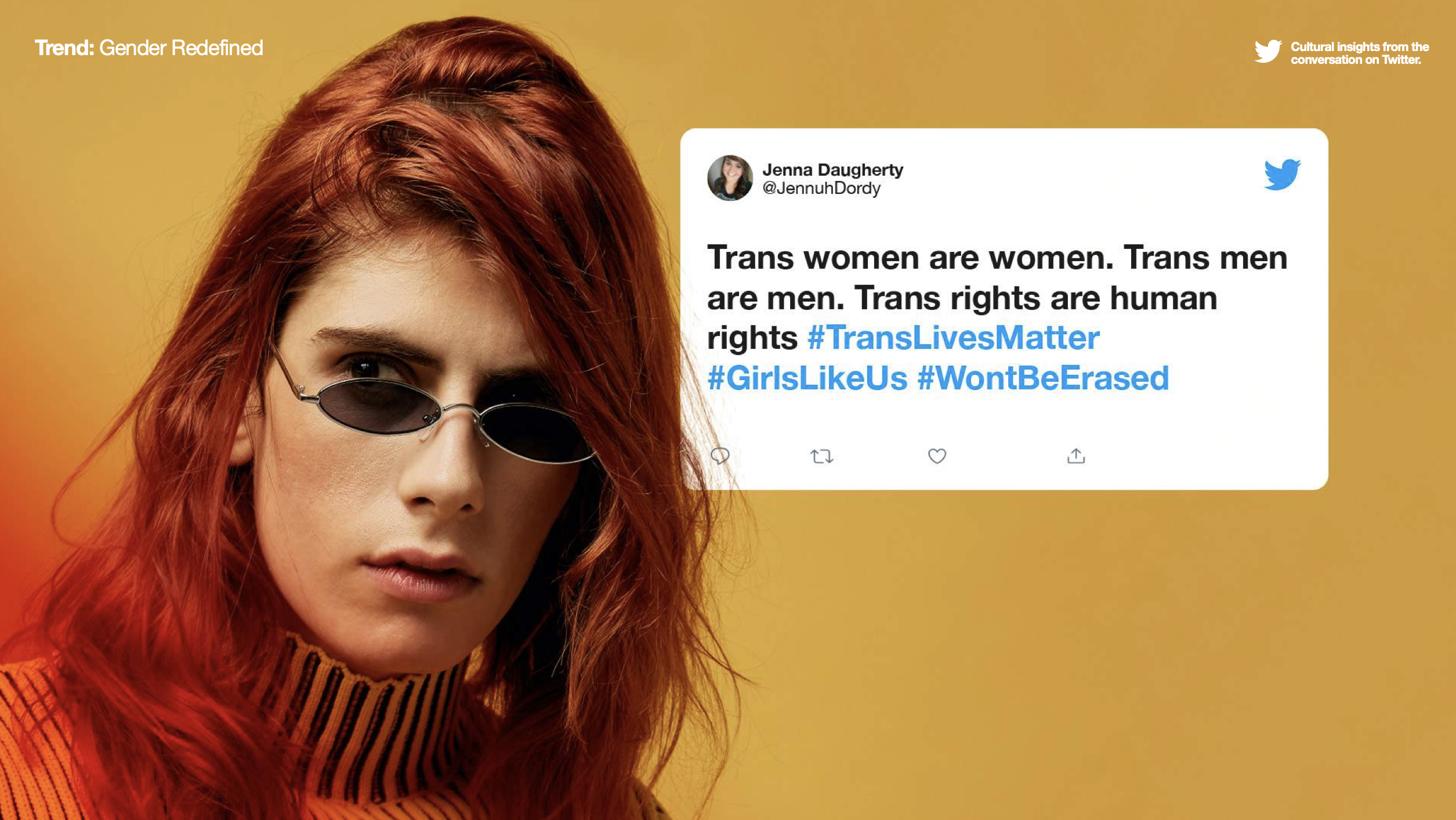
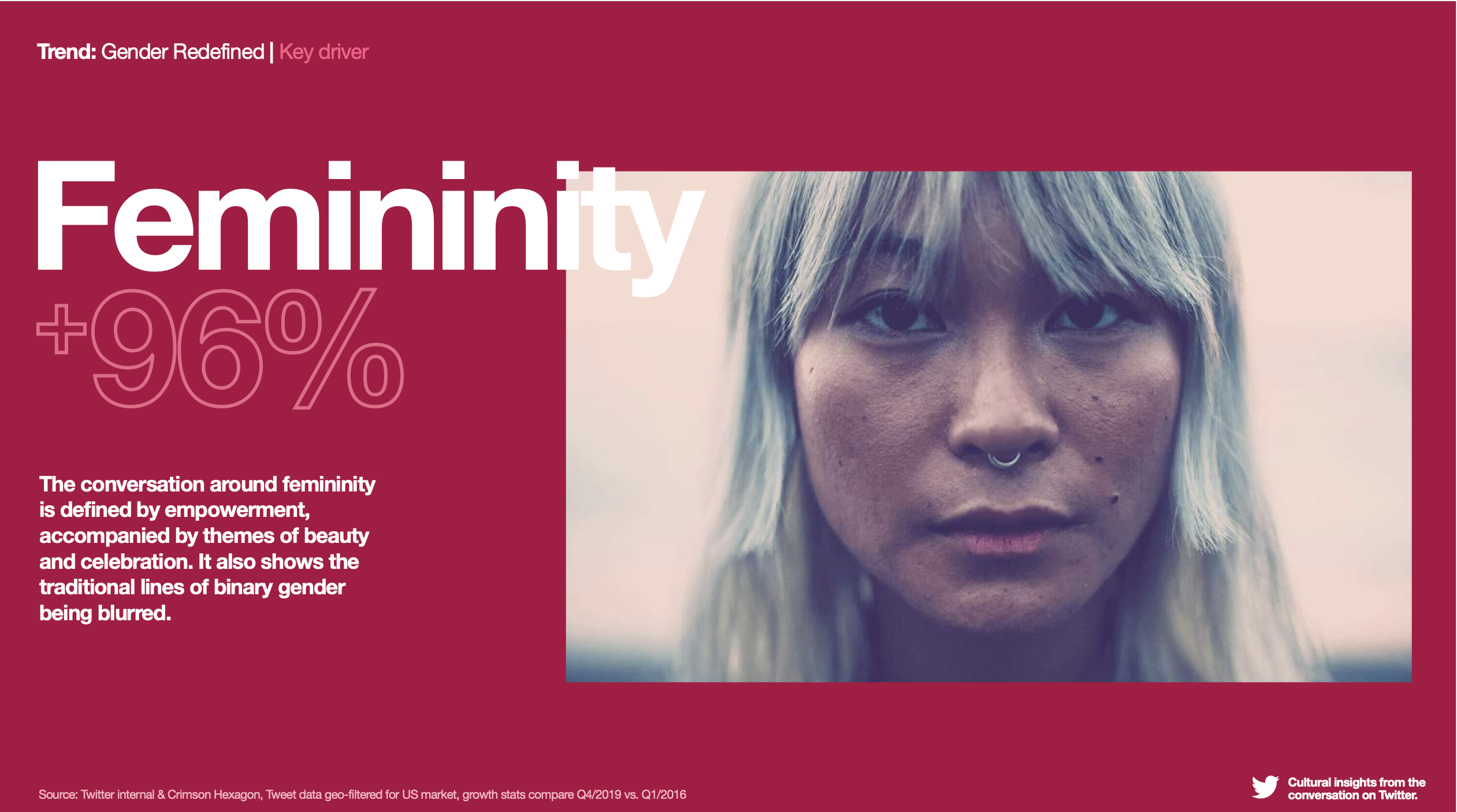
References
Big Think (2011). Judith Butler: Your Behavior Creates Your Gender | Big Think. [online] Available at: https://www.youtube.com/watch?v=Bo7o2LYATDc&t=2s [Accessed 15 Sep. 2023].
Butler, J. (2015). Judith Butler on gender and the trans experience: "One should be free. [online] Verso. Available at: https://www.versobooks.com/en-gb/blogs/news/2009-judith-butler-on-gender-and-the-trans-experience-one-should-be-free-to-determine-the-course-of-one-s-gendered-life [Accessed 16 Sep. 2023].
Butler, J. (1990) Subjects of sex/gender/desire. In Gender Trouble: feminism and the subversion of identity (pp. 1-34). New York : Routledge
Cherry, K. (2022), Industry and Inferiority in Psychosocial Development, Psychosocial Development Guide, Very Well Mind. https://www.verywellmind.com/identity-versus-confusion-2795735
Eleanor Weaver | Updated on17 07 2023 et al. (no date) Gender-neutral toys made for every child, Mother & Baby. Available at: https://www.motherandbaby.com/reviews/toddler-toys/gender-neutral-toys/ (Accessed: 23 September 2023).
Ellesse, C. [@charellesse] (2023, April 13), gender expression vs gender identity, https://www.tiktok.com/@girlswillbeboys_/video/7221180922408766725
Foxbeast (2022). Poochie Bluey by Foxbeast on DeviantArt. [online] www.deviantart.com. Available at: https://www.deviantart.com/foxbeast/art/Poochie-Bluey-905082258 [Accessed 27 Sep. 2023].
Fox-Suliaman, J., (2023),14 Androgynous Brands That Are Bound to Blow Up in 2023 https://www.whowhatwear.com/androgynous-clothing-brands
Free vector: Break gender norms concept with boy and girl illustration (2020) Freepik. Available at: https://www.freepik.com/free-vector/break-gender-norms-concept-with-boy-girl-illustration_7911159.htm?epik=dj0yJnU9dnlYMmhfT3dhakpqeDVQMUxKRGZCckZVaTJGcHU1ZE8mcD0wJm49eEFzaDhLLVk0M3NHd2ZzTEVKcWtodyZ0PUFBQUFBR1VWSDc4 (Accessed: 22 September 2023).
Gender Confusion in Teens: For Teens and Parents Who Want Answers (2021), https://www.google.com/search?client=safari&sca_esv=569265910&rls=en&sxsrf=AM9HkKnhLYRyFSGf7K0KhwNt_ARlNx5eXw:1695934706258&q=gender+confusion&tbm=isch&source=lnms&sa=X&ved=2ahUKEwiw8-mNmc6BAxX4cWwGHYcnA_wQ0pQJegQIDRAB&biw=1127&bih=696&dpr=2#imgrc=EYs37SxOajthEM
Halim, M.L., Ruble, D.N & Amodio, D.M. (2011) From pink frilly dresses to ‘one of the boys’: a social-cognitive analysis of gender identity development and gender bias. Social and personality psychology. 5 (1), 933-949. Available from: https://doi.org/10.1111/j.1751-9004.2011.00399.x [Accessed: 21 Sep. 2023].
Healthy Gender Development and Young Children A Guide for Early Childhood Programs and Professionals. (2017). Available at: https://depts.washington.edu/dbpeds/healthy-gender-development.pdf [Accessed 20 Sep. 2023].
How gender affects kids learning & play (no date) Under 5s Limited. Available at: https://www.under5s.co.nz/shop/Hot+Topics+Articles/Child+Development/How+gender+affects+kids+learning+and+play.html (Accessed: 24 September 2023).
Kamenetz, A. and Turner, C. (2019). NPR Choice page. [online] Npr.org. Available at: https://www.npr.org/2019/03/26/705824731/sparkle-unicorns-and-fart-ninjas-what-parents-can-do-about-gendered-toys [Accessed 20 Sep. 2023].
Kristyn Anthony, January 7, 2020 (no date) Are brands ready for a gender-fluid future?, Strategy. Available at: https://strategyonline.ca/2020/01/07/are-brands-ready-for-a-gender-fluid-future/ (Accessed: 22 September 2023).
Lebowitz, S. (no date) Workers haven’t given up on getting their ‘dream job’ - but what they’re looking for has changed, Business Insider. Available at: https://www.businessinsider.com/what-a-dream-job-means-to-todays-workers-2023-1 (Accessed: 22 September 2023).
Martin, C. & Ruble, D. (2010) Patterns of gender development. Annual review of psychology, 61 (1), 353-381. Available from: https://doi.org/10.1146/annurev.psych.093008.100511 [Accessed: 20 Sep. 2023].
MOSAIC (2018). Always #LikeAGirl. [online] Available at: https://www.youtube.com/watch?v=dxrPeFKtUwQ [Accessed 17 Sep. 2023].
Paris, J. (2023), 15.4: Development of Gender Identity, College of Crayons Child Growth and Development, LibreTexts Social Sciences. https://socialsci.libretexts.org/Courses/Rio_Hondo/CD_106%3A_Child_Growth_and_Development_(Andrade)/15%3A_Adolescence_-_Social_Emotional_Development/15.04%3A_Development_of_Gender_Identity#:~:text=According%20to%20social%2Dlearning%20theory,the%20behaviors%20of%20another%20gender
Pasche Guignard, F. (2015). A Gendered Bun in the Oven: The Gender-reveal Party as a New Ritualization during Pregnancy. Studies in Religion/Sciences Religieuses, 44(4), 479–500. https://doi.org/10.1177/0008429815599802
Rideout, V., Peebles, A., Mann, S., & Robb, M. B. (2022). Common Sense census: Media use by tweens and teens, 2021. https://www.commonsensemedia.org/sites/default/files/research/report/8-18-census-integrated-report-final-web_0.pdf
Rosemary, B. (2020), The Gender Identity Terms You Need To Know https://www.psycom.net/gender-identity-terms
Ruble, D., Taylor., L.J., Cyphers, L., Greulich, F.K., Lurve, L.E. & Shrout, P.E. (2007) The role of gender constancy in early gender development. Child Development, 78 (1), 1121-1136. Available from: https://doi.org/10.1111/j.1467-8624.2007.01056.x [Accessed: 20th September].
Simon, L.M., Edelstein, L.C., Nagalla, S., Woodley, A.B., Chen, E.S., Kong, X., Ma, L., Fortina, P., Kunapuli, S., Holinstat, M. and McKenzie, S.E., 2014. Human platelet microRNA-mRNA networks associated with age and gender revealed by integrated plateletomics. Blood, The Journal of the American Society of Hematology, 123(16), pp.e37-e45.
Skills set competence ability success work stock vector (royalty free) 2083800316 (no date) Shutterstock. Available at: https://www.shutterstock.com/image-vector/skills-set-competence-ability-success-work-2083800316 (Accessed: 22 September 2023).
Suksawat, S. (2019) Download many hands holding colorful puzzle pieces for free, Vecteezy. Available at: https://www.vecteezy.com/vector-art/537366-many-hands-holding-colorful-puzzle-pieces (Accessed: 22 September 2023).
Upworthy (2016). A Class That Turned Around Kids’ Assumptions of Gender Roles! YouTube. Available at: https://www.youtube.com/watch?v=G3Aweo-74kY [Accessed 20 Sep. 2023].
Wamsley, L. (2021). A guide to gender identity terms. [online] NPR. Available at: https://www.npr.org/2021/06/02/996319297/gender-identity-pronouns-expression-guide-lgbtq.
www.reimaginegender.org. (n.d.). Developmental Stages of Gender in Young Children. [online] Available at: https://www.reimaginegender.org/insights/developmental-stages-of-gender-in-young-children [Accessed 20 Sep. 2023].
Yoon, J. (n.d.). JeongMee Yoon’s official website. [online] www.jeongmeeyoon.com. Available at: http://www.jeongmeeyoon.com/aw_pinkblue_pink013.htm [Accessed 20 Sep. 2023].
(2017). YouTube. 17 August. Available at: https://www.youtube.com/watch?v=nWu44AqF0iI (Accessed: 21 September, 2023).
(2021). YouTube. 29 June. Available at: https://www.youtube.com/watch?v=3A792ZR6z68&t=10s (Accessed: 22 September 2023).

